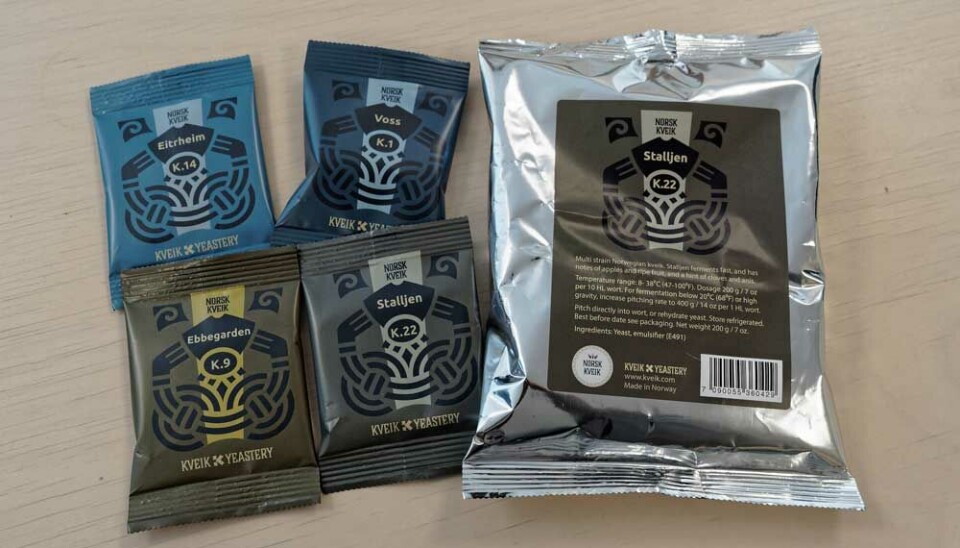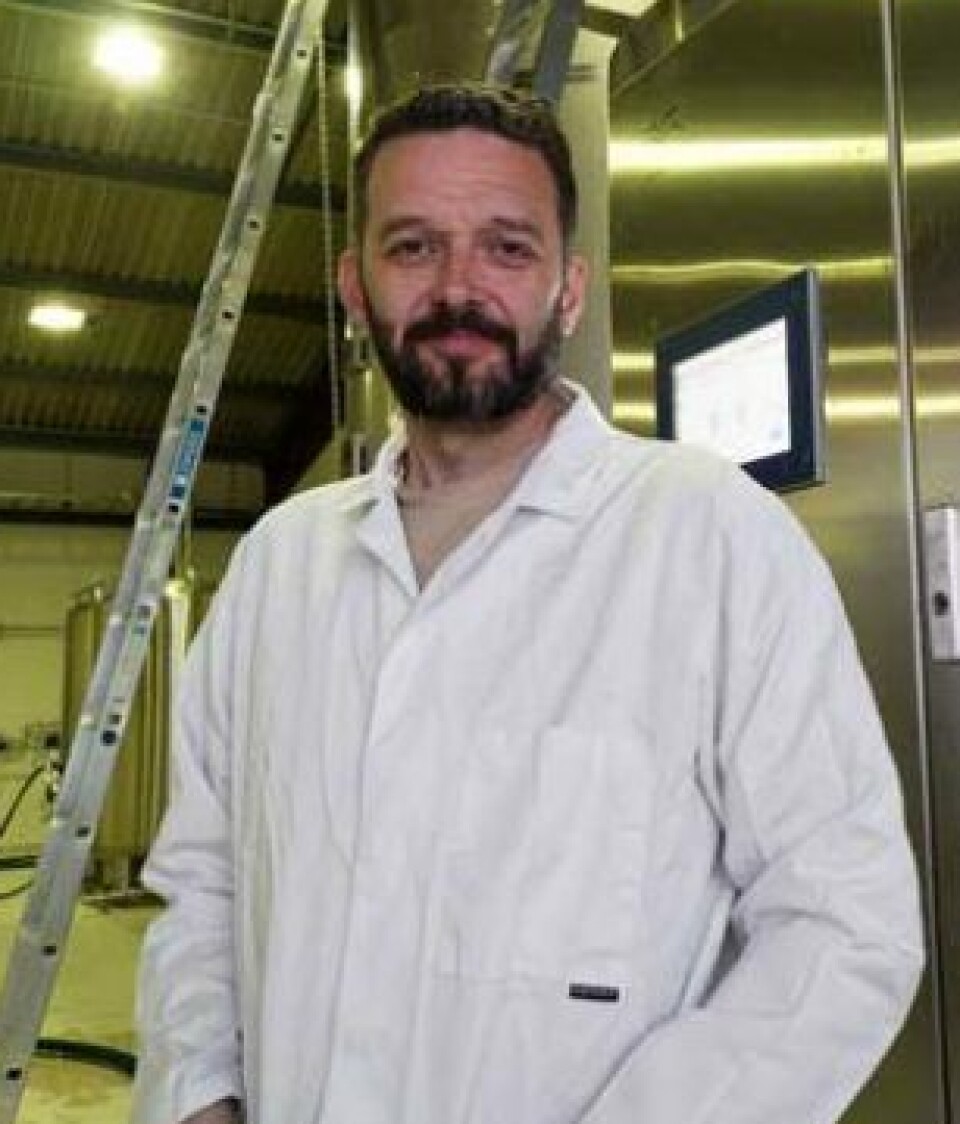THIS CONTENT IS BROUGHT TO YOU BY Nofima The Norwegian Institute of Food, Fisheries and Aquaculture Research - read more

This Norwegian yeast is sought after by microbreweries around the world
Kveik is not like other yeasts. "You can produce beer in two to three days, compared to 10 to 14 days when using other industrial yeas," researcher says.
Currently, kveik can be purchased in 12 countries.
“It wasn’t until November last year that we managed to produce dry yeast for the first time,” Øystein Bakken Vold says.
He is the founder and managing director of Kveik Yeastery. The tradition comes from Western Norway, and the market is global.

Kveik is a rare Norwegian ingredient that is sought after all over the world. Currently, it is primarily small and medium-sized breweries that want it. However, Vold and his collaborators at Nofima want to use it more in baking as well.
Little grain, different yeast
Bjørn Roth is a senior scientist at Nofima during working hours and a beer enthusiast in his spare time. He explains that it is the scarcity of grain in Norway that makes the yeast tradition stand out from other beer-drinking countries.
“There are a number of beer traditions in Europe. What they have in common is that they have had access to grain. That is why they have always had a yeast culture on the go, which means they have been able to brew a steady flow of beer. Production has been continuous,” Roth says.
When it has been possible to brew all the time, the yeast never becomes dry.
“In Norway, on the other hand, we haven’t had a culture of brewing beer continuously, because we are a country with little grain,” he says.
Rapid brewing
Over the centuries, Norwegian brewers have therefore needed a yeast that can withstand drying out between each brew. At the same time, the yeast has had to be ready to be used quickly.
“The times we have brewed beer, it has been for gatherings like funerals or weddings. Both of which can occur without much warning,” Roth says.
Moreover, it has been too cold in Norway to brew the European way, with a room temperature of around 20 degrees.
“Instead, we have used smokehouses, where they were heated up to around 30-40 degrees Celsius. We were then able to brew in just three days. If we had used European yeast to brew that quickly, it would have tasted horrendous,” he explains.
Survived in the west
Kveik is the result of this climate and these traditions. It has survived in some areas of Norway. A few years ago, it was rediscovered.
“It is now one of the big hypes for microbreweries in the United States. Norwegian farmhouse ale is defined as a separate style. Norwegians haven’t quite realised yet that we have our own beer that is getting international attention,” Roth says.
In addition to a good, fruity taste that makes the beer stand out from others, breweries can increase their production if they use kveik.
“The fact that it allows the beer to ferment very quickly means that a microbrewery can easily double or triple its production. At the same time, they get a very fruity beer, and every kveik has its own taste,” he says.
He likes to refer to kveik as ‘our family heirloom’.

Spreading the family heirloom
Right now, Øystein Bakken Vold is leading the way in managing and spreading this family heirloom. He is the managing director of Kveik Yeastery, which uses the research to spread the Norwegian yeast culture.
“We conducted a preliminary project together with Nofima in which we characterised some old Norwegian yeasts,” he says.
This involved fermentation temperature, taste, and aroma. The preliminary project has now become a larger project that looks at efficiency, stability, and other applications: Baking, distilling, and production of bioethanol as fuel.
“Kveik has been used in baking for centuries. They used the yeast they had for both baking and brewing. Åpent Bakeri has now joined us in the project,” Vold says.
Åpent Bakeri (Open Bakery) is a Norwegian bakery chain.
Pasteur and Carlsberg
Previously, Vold ran a shop that sold ingredients and equipment for brewing. It was the customers who convinced him that kveik was something to focus on.
“We saw that it is an amazing yeast. You can produce beer in two to three days, compared to 10 to 14 days when using other industrial yeast. We saw that it had great potential if we managed to get things in place, and now we have spent four years and launched the first products in January,” he says.

Louis Pasteur — the same scientist who gave his name to pasteurisation — was the first to find out that yeast is made up of living cells.
In the late 1800s, Danish Carlsberg became the first brewery in the world to isolate a yeast cell and use only one variety of yeast in its production. That means you get a very stable product. The yeast that you can buy in the store is also just one type of yeast.
Kveik, on the other hand, contains several types of yeast. It is called a multi strain.
Kveik disappeared
“When yeast production became industrial and yeast could be bought in stores, people didn’t need to keep yeast at home themselves. It is not an easy thing to produce, and it can turn sour and spoil. A great deal of yeast disappeared, but many farms in Western Norway continued traditional brewing using a copper kettle on an open flame. A father passed the yeast on to his son. This means that these yeast strains have survived for centuries,” Vold says.
Kveik Yeastery now has five different yeast varieties on sale. The bags clearly state that this is Norwegian kveik, and the different varieties are named according to where they originate from.
In parallel with the research, the factory is trying to expand.
“The challenge for us is that we are the only yeast producer in Norway. There is a lack of expertise when it comes to yeast,” he says.
The taste of kveik
Nofima scientist Lars Axelsson is the microbiologist in the kveik project.
“When Kveik Yeastery dries the yeast, it is important that it is the same every single time. Among other things, we will use genetic methods to make sure that it remains stable,” he says.
And not least, Nofima ensures that the taste is correct. The research institute has its own sensory panel – professional tasters who are trained to notice the differences between nuances and describe exactly what they taste.
“The most important contribution is that Kveik Yeastery gets a spectrum of characteristics that they can use in their marketing,” Axelsson says.
He explains that the special thing that Kveik Yeastery does is to keep the original mix of yeast strains in each individual kveik. It is the mix itself that gives each kveik its special characteristics and provides a sales advantage compared to other suppliers who have isolated individual strains from kveik.
“The kveik used has survived because it is good and stable when dried, and because it is well suited to the special way Norwegian farms have brewed beer,” Axelsson says.

This article/press release is paid for and presented by Nofima The Norwegian Institute of Food, Fisheries and Aquaculture Research
This content is created by Nofima's communication staff, who use this platform to communicate science and share results from research with the public. Nofima is one of more than 80 owners of ScienceNorway.no. Read more here.
More content from Nofima:
-
Red algae grown in wastewater from fish-farming facilities could become sustainable salmon feed
-
Pumpkins are good for more than just Halloween decorations
-
This is how temperature affects a salmon's health and growth
-
Study: Omega-3 and zinc is a powerful duo for salmon
-
Fish may turn yellow if frozen too fresh
-
Is it better if food is packaged in plastic or paperboard?





































